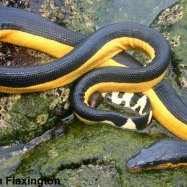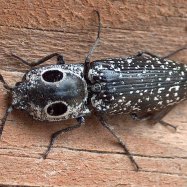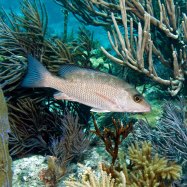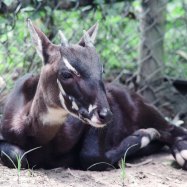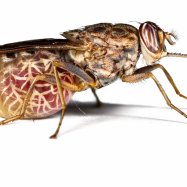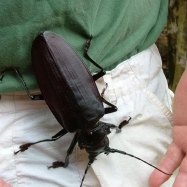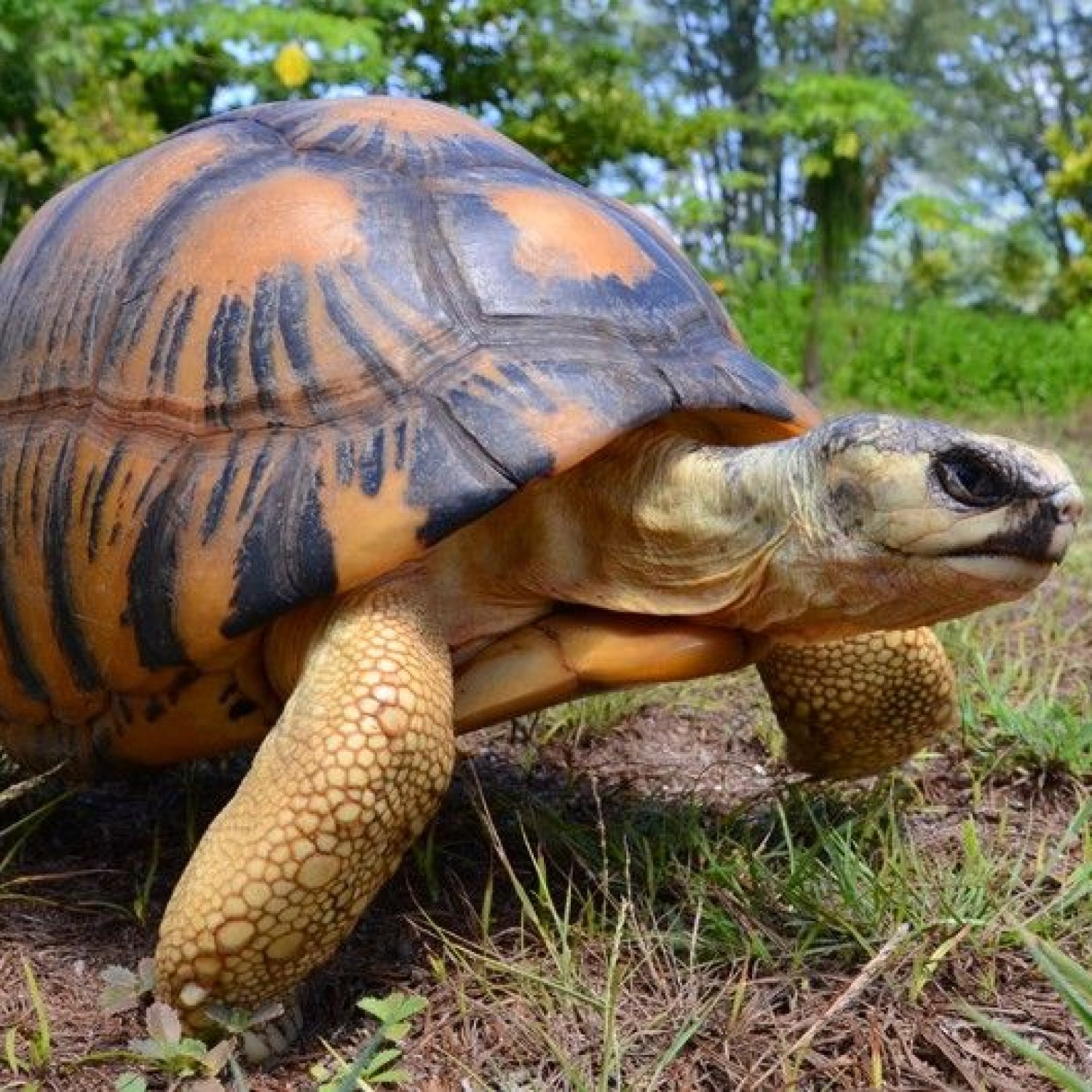
Radiated Tortoise
Up to 16 inches (40 cm)
The Radiated Tortoise, found in Madagascar, is a beloved member of the Testudinidae family. Its dome-shaped carapace and high-domed shell make it a unique species. With a length of up to 16 inches, it is smaller compared to other tortoises. These magnificent creatures are facing extinction due to loss of habitat and poaching. Let's protect these gentle giants and preserve their natural home. #RadiatedTortoise #Madagascar #Testudinidae
Animal Details Summary:
Common Name: Radiated Tortoise
Kingdom: Animalia
Habitat: Semi-arid and dry thorn forests
The Radiated Tortoise: A Star in the World of Reptiles
Have you ever come across a tortoise with a striking star-like pattern on its shell? If so, you may have encountered the fascinating Radiated Tortoise (Astrochelys radiata). These unique creatures are found only in one place on earth: the southern region of Madagascar. Their scientific name, Astrochelys radiata, aptly reflects their extraordinary physical appearance, with "astro" meaning star and "radiata" meaning radiating. Let's take a closer look at this extraordinary species and uncover what makes them truly exceptional Radiated Tortoise.Kingdom, Phylum, Class, Order, and Family
The Radiated Tortoise belongs to the Kingdom Animalia, which refers to all animals. They are part of the Phylum Chordata, meaning they have a backbone. Within Chordata, they fall under the Class Reptilia, indicating that they are cold-blooded, scaly creatures. Their Order is Testudines, or commonly known as turtles and tortoises. Within this order, they belong to the Family Testudinidae, which includes over 50 species of tortoises.Habitat and Adaptations
Radiated Tortoises have adapted to survive in semi-arid and dry thorn forests, which are the dominant habitats in southern Madagascar. These tortoises are well-suited to this environment, with a high dome-shaped shell that helps them protect their internal organs from intense heat and sunlight. Their dark brown or black shell is also an effective heat absorber, which helps them maintain their body temperature. Moreover, their unique yellow star-like pattern on their shell not only makes them stand out but also helps them camouflage in their environment River Turtle.As reptiles, radiated tortoises are cold-blooded, meaning they rely on their external environment to regulate their body temperature. Thus, their shell also plays a crucial role in keeping them warm during colder nights, as it acts as a thermal insulator. This adaptation allows them to thrive in their native semi-arid forests.
Feeding Behavior
Radiated Tortoises are herbivores, which means they only eat plant-based food. The succulent plants and cacti found in their natural semi-arid habitat provide them with the necessary nutrients and water they need to survive. These tortoises have a specialized beak that allows them to crush and grind tough plant materials. They have a high fiber diet, and as a result, they have an excellent digestive system that efficiently breaks down and absorbs nutrients from the plants they consume.Geographical Distribution and Country of Origin
The Radiated Tortoise is endemic to Madagascar, a large island located off the coast of East Africa. More specifically, they are only found in the southern region of this island nation. Madagascar is the fourth-largest island globally, with a diverse array of ecosystems, making it a perfect place for the Radiated Tortoise to call home.Length and Body Shape
Radiated Tortoises are relatively large creatures, with some individuals growing up to 16 inches (40 cm) in length. However, their size varies depending on the availability of food and other factors such as environmental conditions and genetics. They are known for their large, dome-shaped carapace and high-domed shell, which offer protection and support for their bodies. Their shell is typically dark brown or black, but the vivid yellow star-like pattern makes them stand out among other tortoise species.Conservation Status
Unfortunately, the Radiated Tortoise is currently listed as Critically Endangered on the International Union for Conservation of Nature (IUCN) Red List of Threatened Species. This is due to various factors, including habitat loss and illegal pet trade. These tortoises are considered a delicacy in some parts of the world, and their unique appearance makes them desirable pets, leading to a decline in their population.Efforts towards Protection and Conservation
The good news is, numerous organizations and conservationists are working tirelessly to protect and conserve the Radiated Tortoise. In Madagascar, non-governmental organizations like the Madagascar Biodiversity Partnership and Turtle Survival Alliance work with local communities to raise awareness about the importance of conserving these creatures and their habitats. They also collaborate with law enforcement agencies to prevent the illegal trade of Radiated Tortoises. In addition, breeding programs are being implemented in captivity to help restore the population of this species.Conclusion
The Radiated Tortoise is truly a star in the world of reptiles. From their striking shell to their unique adaptations, these creatures are a testament to the remarkable diversity of life on our planet. However, their survival is under threat, and it is our responsibility to protect and conserve them for future generations to come. So, the next time you come across a Radiated Tortoise or learn about them, remember their unique story and the importance of their conservation.

Radiated Tortoise
Animal Details Radiated Tortoise - Scientific Name: Astrochelys radiata
- Category: Animals R
- Scientific Name: Astrochelys radiata
- Common Name: Radiated Tortoise
- Kingdom: Animalia
- Phylum: Chordata
- Class: Reptilia
- Order: Testudines
- Family: Testudinidae
- Habitat: Semi-arid and dry thorn forests
- Feeding Method: Herbivorous
- Geographical Distribution: Southern Madagascar
- Country of Origin: Madagascar
- Location: Madagascar
- Animal Coloration: Dark brown or black with distinctive yellow star-like pattern
- Body Shape: Dome-shaped carapace and a high-domed shell
- Length: Up to 16 inches (40 cm)
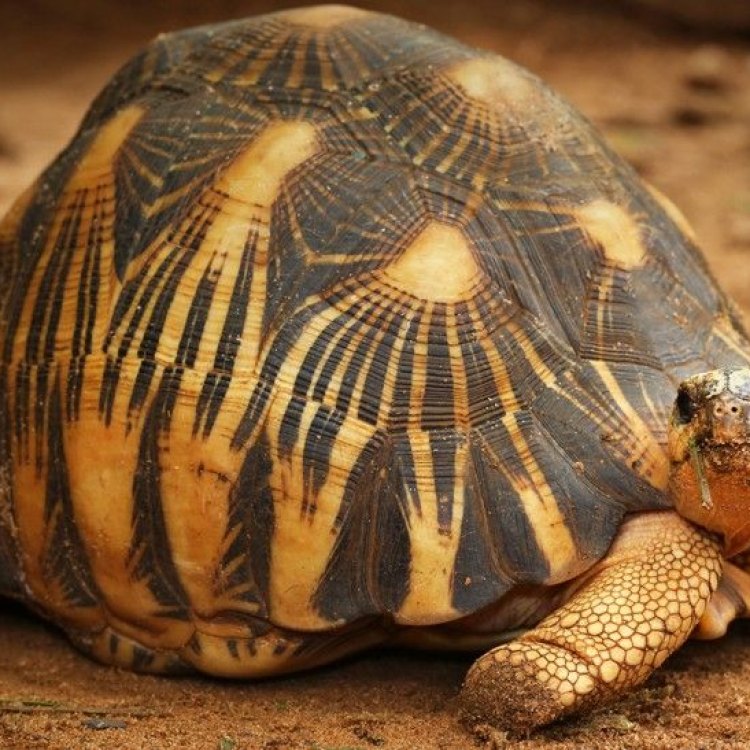
Radiated Tortoise
- Adult Size: Up to 16 inches (40 cm)
- Average Lifespan: Over 100 years
- Reproduction: Oviparous
- Reproductive Behavior: Males compete for females and engage in courtship behavior
- Sound or Call: No distinct vocalizations
- Migration Pattern: Non-migratory
- Social Groups: Solitary
- Behavior: Primarily diurnal and spend most of their time grazing
- Threats: Habitat loss, poaching, and illegal pet trade
- Conservation Status: Critically Endangered
- Impact on Ecosystem: Seed dispersal and vegetation management
- Human Use: Traditional medicine and illegal pet trade
- Distinctive Features: Distinctive star-like pattern on the shell
- Interesting Facts: Can survive for months without water and can retract their heads fully into the shell for protection
- Predator: Mainly humans, but also birds and mammals
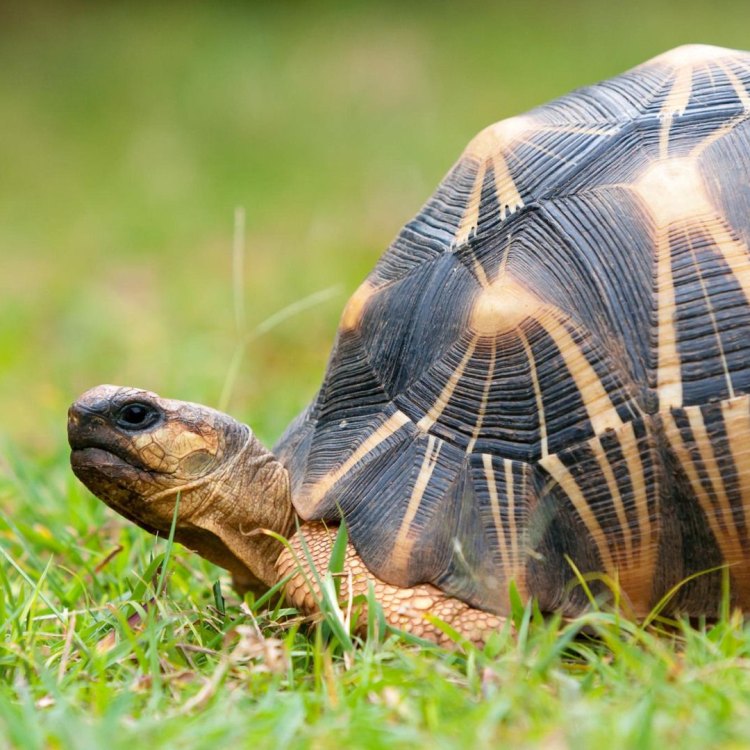
Astrochelys radiata
The Mystical and Endangered World of Radiated Tortoises
In the vast, colorful world of reptiles, there is one species that stands out with its unique features and endangered status – the Radiated Tortoise. This magnificent creature, with its striking star-like patterned shell, has been roaming the earth for over 100 years, yet it is now critically endangered due to human activities.But what makes this tortoise so special? Let's dive into the world of the Radiated Tortoise to explore its distinctive features, behavior, threats, and impact on the ecosystem.
Size and Lifespan:
Radiated Tortoises can grow up to 16 inches (40 cm) in length, making them one of the largest tortoise species in the world PeaceOfAnimals.Com. They have a distinctively round-shaped shell with a flattened top and a high dome. The coloration of their shell ranges from dark brown to almost black, with bright yellow or orange markings that give the appearance of a star.
One of the most fascinating facts about this species is its impressive lifespan. With an average lifespan of over 100 years, these tortoises can potentially outlive humans, making them one of the longest-living vertebrate species on earth.
Reproduction and Behavior:
Like most tortoises, Radiated Tortoises are oviparous, meaning they lay eggs. This reproductive behavior is essential for the survival of the species, but it also makes them vulnerable to poaching and habitat loss.
During the breeding season, which occurs between November and January, male tortoises engage in courtship behavior, such as head-bobbing and circling the female, to compete for mating rights. This competition can be quite intense, with male tortoises sometimes pushing or flipping each other over to establish dominance.
However, despite this competitive behavior, radiated tortoises are solitary creatures and prefer to roam and forage alone Root Aphids.
Migratory Pattern and Social Groups:
Unlike other turtle species, Radiated Tortoises do not migrate and are considered non-migratory. They have a small home range, usually within a few kilometers, where they spend most of their time grazing on shrubs, grasses, and succulent plants.
These tortoises are solitary creatures, and although they may come across each other in their home range, they rarely interact and maintain their own territories.
Threats to Survival:
Unfortunately, despite their formidable size and longevity, Radiated Tortoises are facing severe threats to their survival. The primary threat is habitat loss due to urban and agricultural development, which has resulted in a significant decline in their populations.
But perhaps the biggest threat to this species is illegal poaching for their meat and shells. In some parts of the world, such as Madagascar, where they are native, Radiated Tortoises are considered a delicacy and are heavily exploited for food. Their shells are also highly sought after for decorative purposes, leading to a thriving illegal trade.
Conservation Status and Impact on Ecosystem:
Due to the alarming decline in their population, the International Union for Conservation of Nature (IUCN) has listed Radiated Tortoises as critically endangered. This means that they are facing an extremely high risk of extinction in the wild.
The decline of this species has a significant impact on the ecosystem. As herbivorous animals, Radiated Tortoises play a crucial role in seed dispersal and vegetation management. Their natural grazing helps in maintaining a healthy balance in the ecosystem and supports the growth of various plant species.
Moreover, as they are long-living species, their population decline can also impact the food chain and the survival of other species that rely on them.
Human Use and Distinctive Features:
Unfortunately, humans have had a significant impact on the survival of Radiated Tortoises, not just through poaching but also through traditional medicine. In some cultures, these tortoises are used for medicinal purposes, believed to cure various ailments. This demand for traditional medicine has contributed to the decline in their numbers.
But perhaps the most distinct and striking feature of the Radiated Tortoise is its shell. With its unique star-like pattern, this species is instantly recognizable and has made it a sought-after species in the illegal pet trade.
Interestingly, these tortoises have the ability to retract their heads entirely into their shells for protection, making it difficult for predators to attack them.
Predators:
While Radiated Tortoises have evolved to survive for over 100 years in the wild, their biggest threat comes from humans. But they are not entirely immune to other predators. In their natural habitat, they may encounter attacks from birds of prey, such as hawks and eagles, and mammals, such as wild boars and civets. However, they have also developed a strong defense mechanism with their hard shells, making it challenging for predators to penetrate.
Conservation Efforts:
Despite the rapid decline of the Radiated Tortoise population, there is still hope for their survival. Various conservation efforts are underway to protect this species and raise awareness about their critical status.
One of the most successful conservation efforts for this species is the Durrell Wildlife Conservation Trust, which has been working closely with local communities in Madagascar to protect and restore the habitat of the Radiated Tortoise.
Moreover, many organizations and individuals are also working towards creating stricter laws against poaching and illegal trade and raising awareness about the importance of preserving this species.
In conclusion, the Radiated Tortoise is a magnificent creature that has captured the hearts of many with its unique features and remarkable longevity. However, it is also a species on the brink of extinction, and it is our responsibility to protect and preserve it for future generations. Through a collective effort, we can ensure that these mystical and endangered creatures continue to thrive in their natural habitat.

The Radiated Tortoise: A Star in the World of Reptiles
Disclaimer: The content provided is for informational purposes only. We cannot guarantee the accuracy of the information on this page 100%. All information provided here may change without prior notice.



